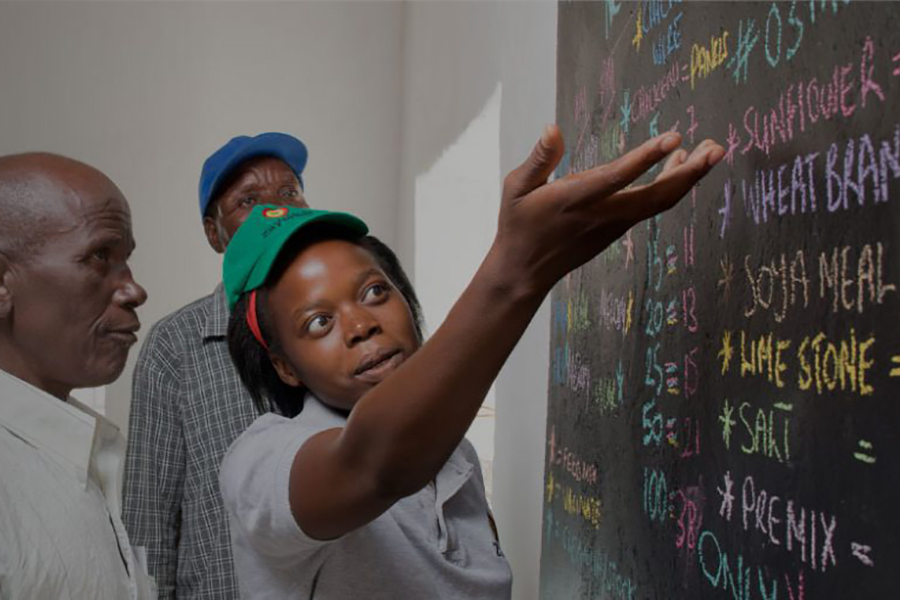Everywhere you look these days, companies, governments, and communities are talking about ‘better business,’ what it means, who it affects, and why it is relevant.
The UK’s proposed Better Business Act is rallying behind the cries for how we define the ‘future of the corporation.’ The suggested contract defines it as the legal obligation for every company to align their interests with those of the wider society and the environment.
I want to talk about one successful public-private partnership evidencing this ethos in action; TRANSFORM.
TRANSFORM is a collaboration between Unilever, the UK’s Foreign, Commonwealth & Development Office (FCDO), and EY that supports social entrepreneurs in South Asia and Africa, improving the lives of low-income households. We offer a combination of grant funding and bespoke business support through expertise and connections to corporate value chains.
Driven by the UN SDGs, in particular no.17, “partnerships for the goals,” it follows the mantra that no other UN SDG is possible without it – which is why it is so key for sustainable progression.
At the initiative’s six-year mark, and now with governments and corporations worldwide leaning further into their broader purpose-led strategies, it seems appropriate to share our learnings on building a global public-private partnership that supports the world’s most innovative impact enterprises.
These enterprises range from the likes of Folia Water, an enterprise increasing access to clean drinking water for low-income consumers in Bangladesh, to Mr. Green Africa, the first recycling company to be a Certified B Corporation on the African continent.
With this in mind, I’ve selected our five significant learnings for building a successful public-private partnership.
1. The Holy Trinity: 3 core organizations are the perfect balance
These core organizations should be responsible for the overriding vision and direction of the partnership and the relationships with suppliers, enterprises, and stakeholders. A leaner central body will strengthen the management of potentially conflicting processes, rules, and requirements all partnerships undoubtedly face!
2. Start small
A committed group of kick-starters allows the core organizations to form trusted relationships, stress-test, and empower the initiative. Avoid getting overexcited about the PR – the successes built from a tight-knit foundation will speak for themselves.
3. Define a shared purpose
Ask yourself, where do the common values between the core organizations lie? And how do we ensure this forms the foundation for a specific partnership goal? Remember, the optimal point you’re trying to hit is a vision with enough specificity that the whole team is clear and aligned while allowing enough room to explore different avenues and respond to crises.
4. The Compatibility Test
Testing your area of collaboration helps build a pipeline by reviewing real projects and finding out where to set your boundaries. This is where reality starts to sink in, and the funding prospects are front and center of the conversation. Remember, if you encounter difficulties with the projects, you can always return to the mapping stage and redefine the shared values.
5. Ground rules: balancing everyone’s needs
Make sure you prioritize the necessary requirements for each organization. Creating contractual templates means you’ll be best placed to deal with even the most unprecedented of events – for TRANSFORM, this meant a well-established blueprint for a rapid Covid-19 response. The model built on the collaboration’s firm relationships and frameworks meant that Unilever and the FCDO could launch the Hygiene & Behaviour Change Coalition (HBCC), which provided funding, technical assistance, and hygiene products to over 20 NGOs throughout 2020.
The partnership in practice
Over the last six years, TRANSFORM has brought together three organizations with distinct areas of expertise, meaning we can offer blended business support; the accomplishments of the enterprises speak for themselves.
With advice from TRANSFORM, Drinkwell overcame growing pains to develop a new business model and partnered with Unilever’s extensive sales force to help sell their new innovative water ATM to communities in Bangladesh. This helped make Drinkwell what it is today: a nationally viable business model that solves the shortage of sanitized drinking water.
Similarly, Unilever’s counsel on recruiting, training, and expanding a network of formidable sales and distribution representatives, contributed to the growth of e-commerce and self-care platform Kasha. Experiencing five times year-on-year revenue growth, it has become one of the leading FemTech organizations in Africa.
TRANSFORM has shown that building a successful public-private partnership takes time, commitment, and resilience. The same is true of reaching the SDGs; no one organization can do it alone. We wanted to put the needs of society at the heart of our mission – and in the hands of some of the most exciting social entrepreneurs. TRANSFORM has shown that combining market-based ingenuity with unique capabilities of business and government offers a pathway to accelerate progress quicker.
If that’s not better business, I’m not sure what is.




































